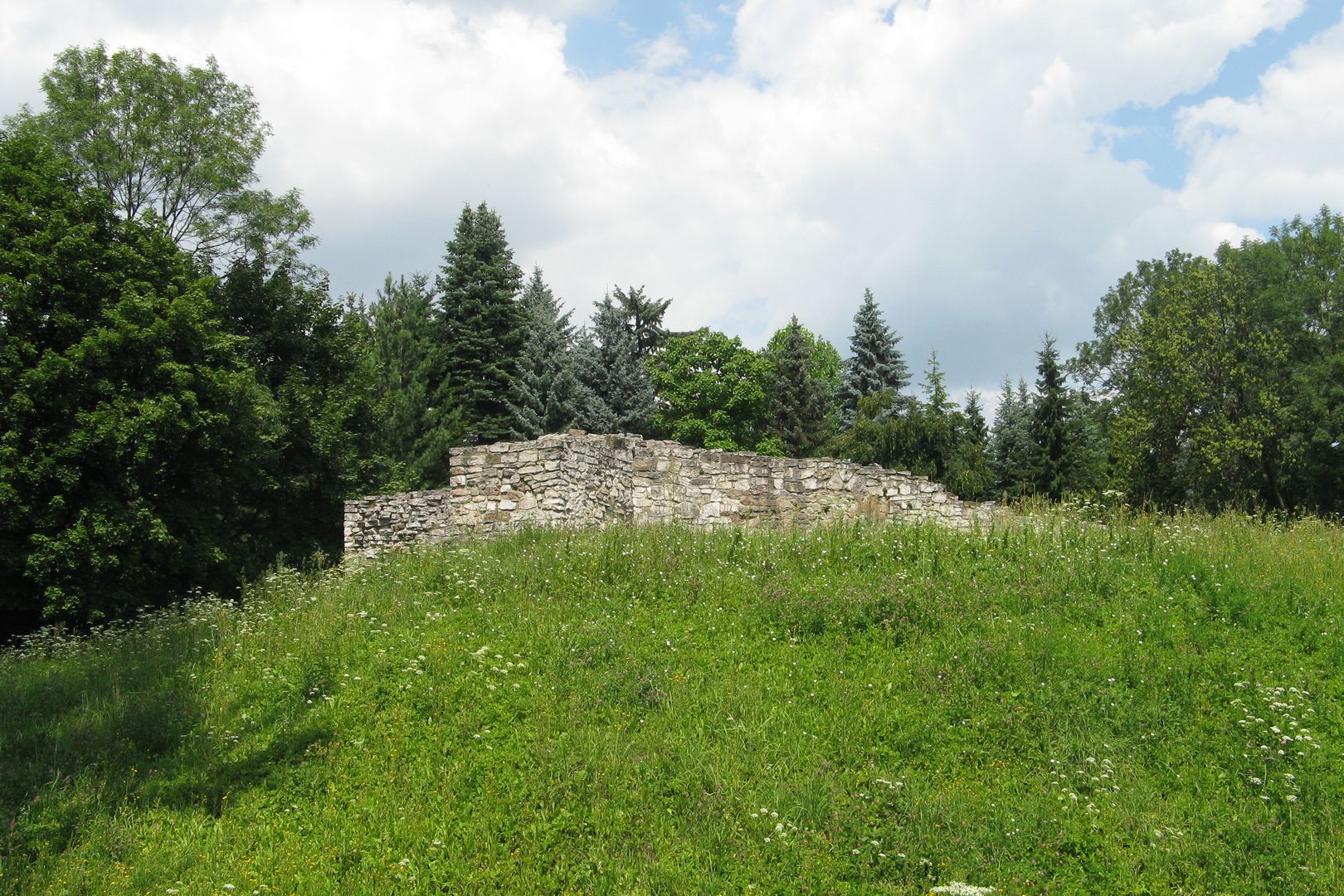The ruins of the castle of the Kraków bishops
6.32

Overview
The Castle of the Kraków Bishops in Sławków, dating back to the second half of the 13th century, stands on the slope of a hill overlooking the Biała Przemsza River. Its primary purpose was to defend against attacks from the direction of Kraków. Its impressive dimensions (124 x 90 m) and sturdy defensive walls, 2–3 meters thick and 6–7 meters high, suggest that it rivaled other princely castles of the time. Construction of the castle likely began on the initiative of Bishop Paweł of Przemanków, and despite interruptions due to political turmoil, the castle gained significance over time. Architecturally, it was designed in the style of a castellan castle, with centrally located semi-bastions. However, the structure was plagued by technical issues, such as weak foundations and the low quality of building materials used.
In the 14th century, the castle was expanded by Bishop Jan Muskata, who surrounded it with an earthen rampart and a moat, enhancing its defensive capabilities. The castle witnessed numerous political struggles, including Czech and Hungarian invasions, as well as conflicts with Polish rulers. In the 14th century, it became the main headquarters of Bishop Muskata, and after his death in 1320, it remained in the hands of Władysław Łokietek for many years.
In the 15th century, both Sławków and the castle suffered from Hussite raids and destruction caused by armed conflicts. After the damages incurred in 1455, the castle undoubtedly underwent a process of reconstruction, for which Bishop Zbigniew Oleśnicki was partially responsible. Although the castle fell into ruin over the years, it retained late Gothic elements and architectural details that attest to its rich history. In 2016, a tunnel beneath the castle was discovered, further enriching our knowledge of this fortress.
Today, though in ruins, the castle remains an important historical and architectural site. Its history intertwines defensive, political, and cultural threads, all of which are deeply connected to the region's past.
Location
2025 Wizytor | All Rights Reserved